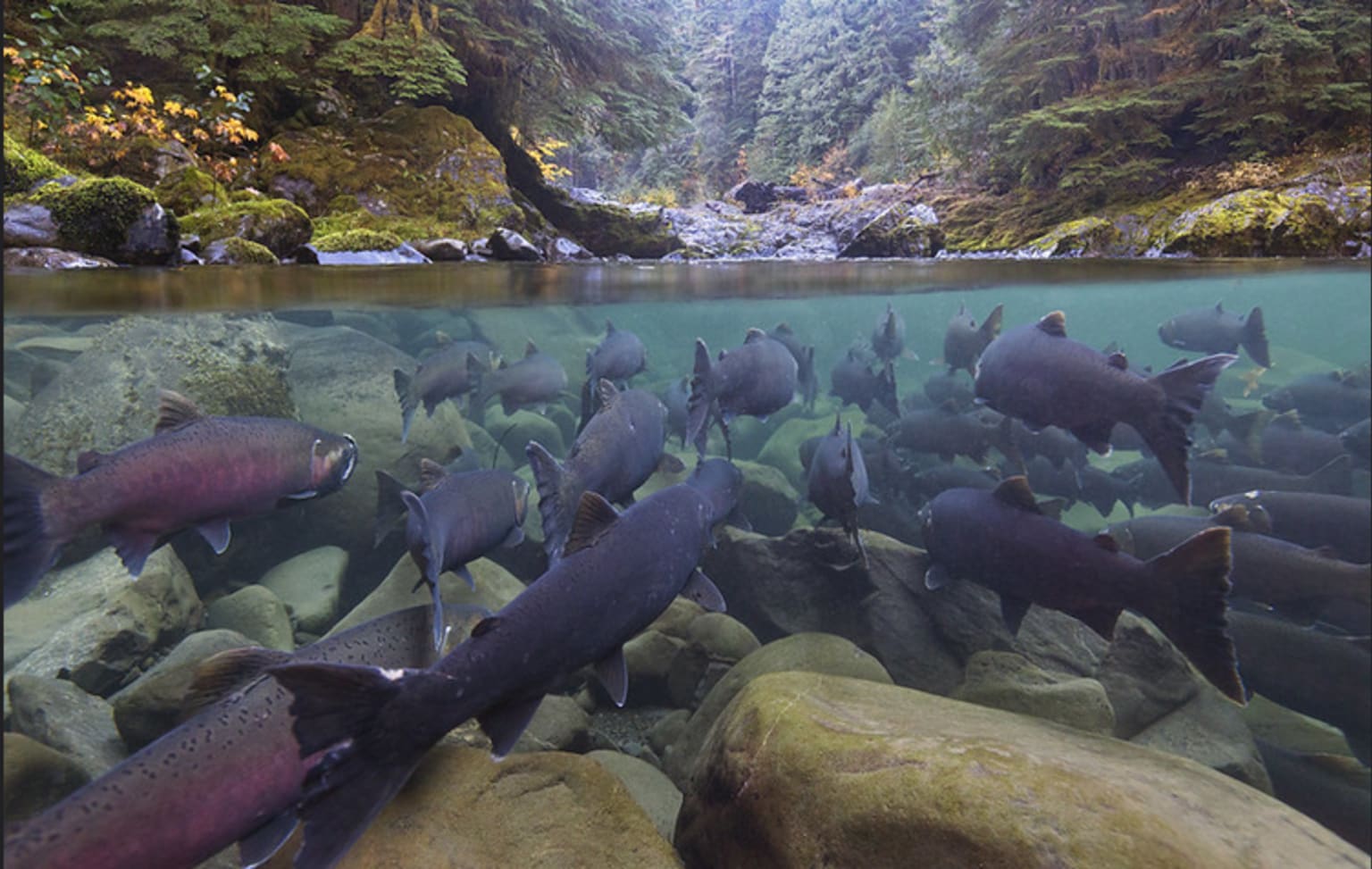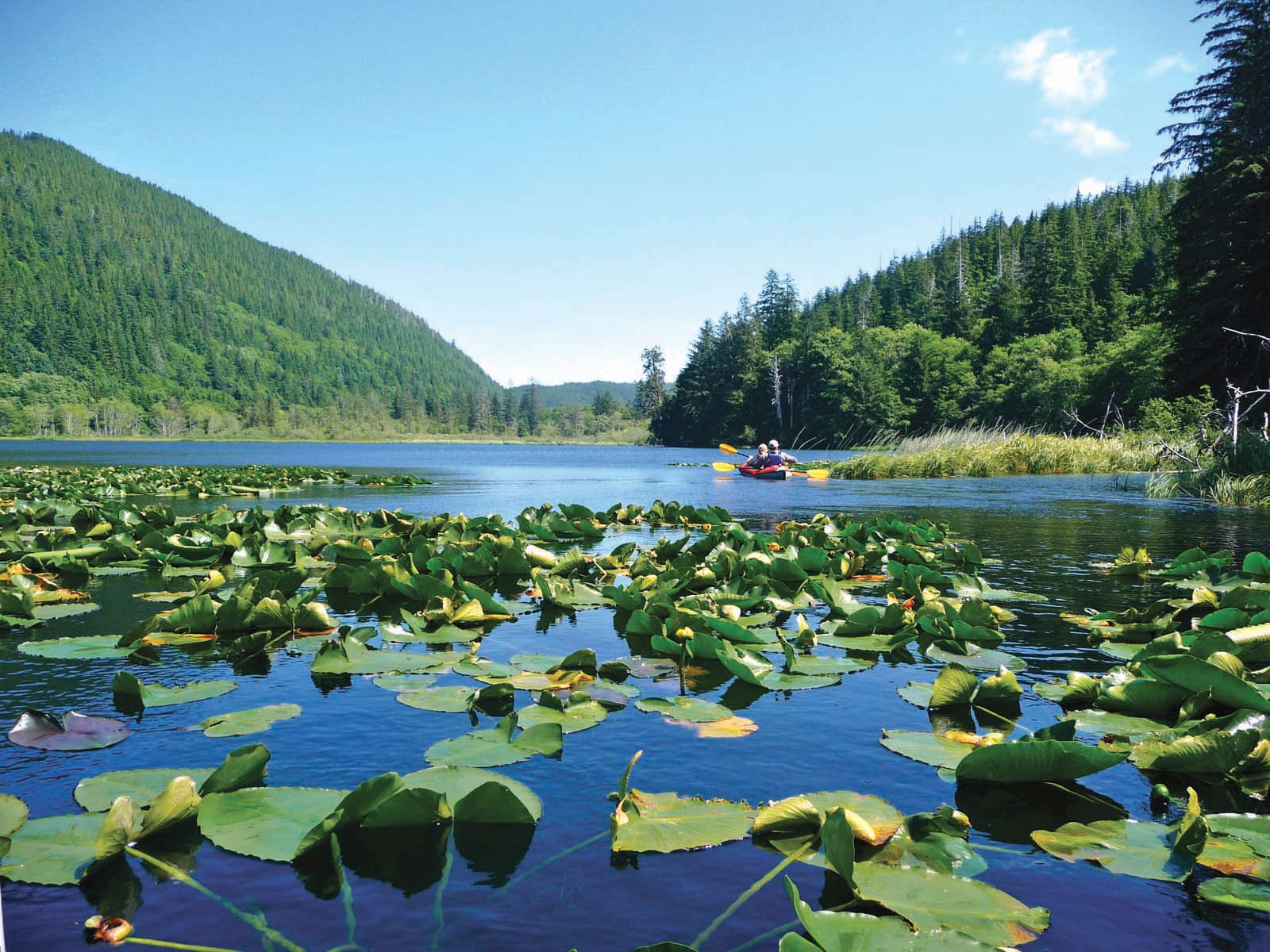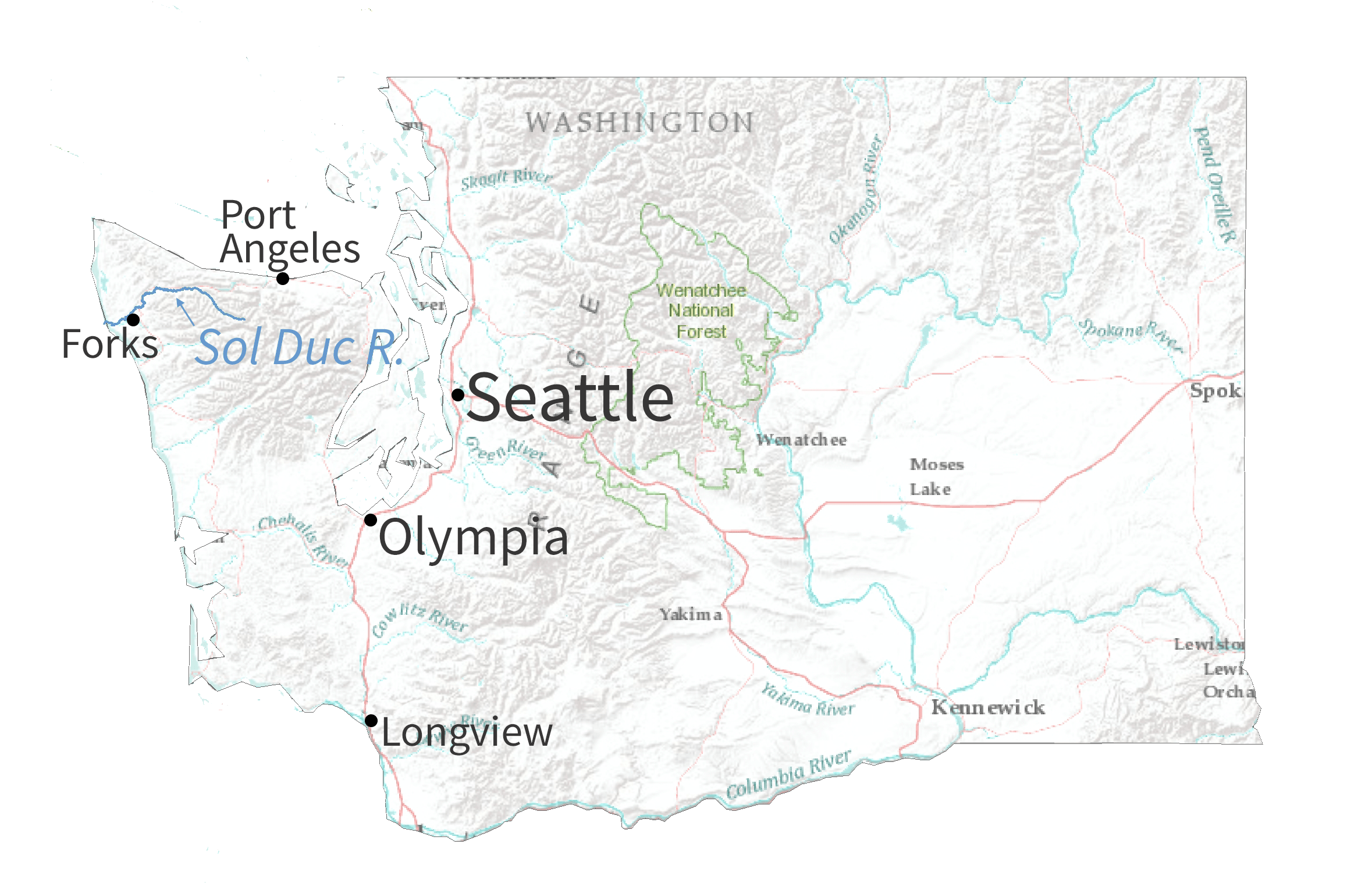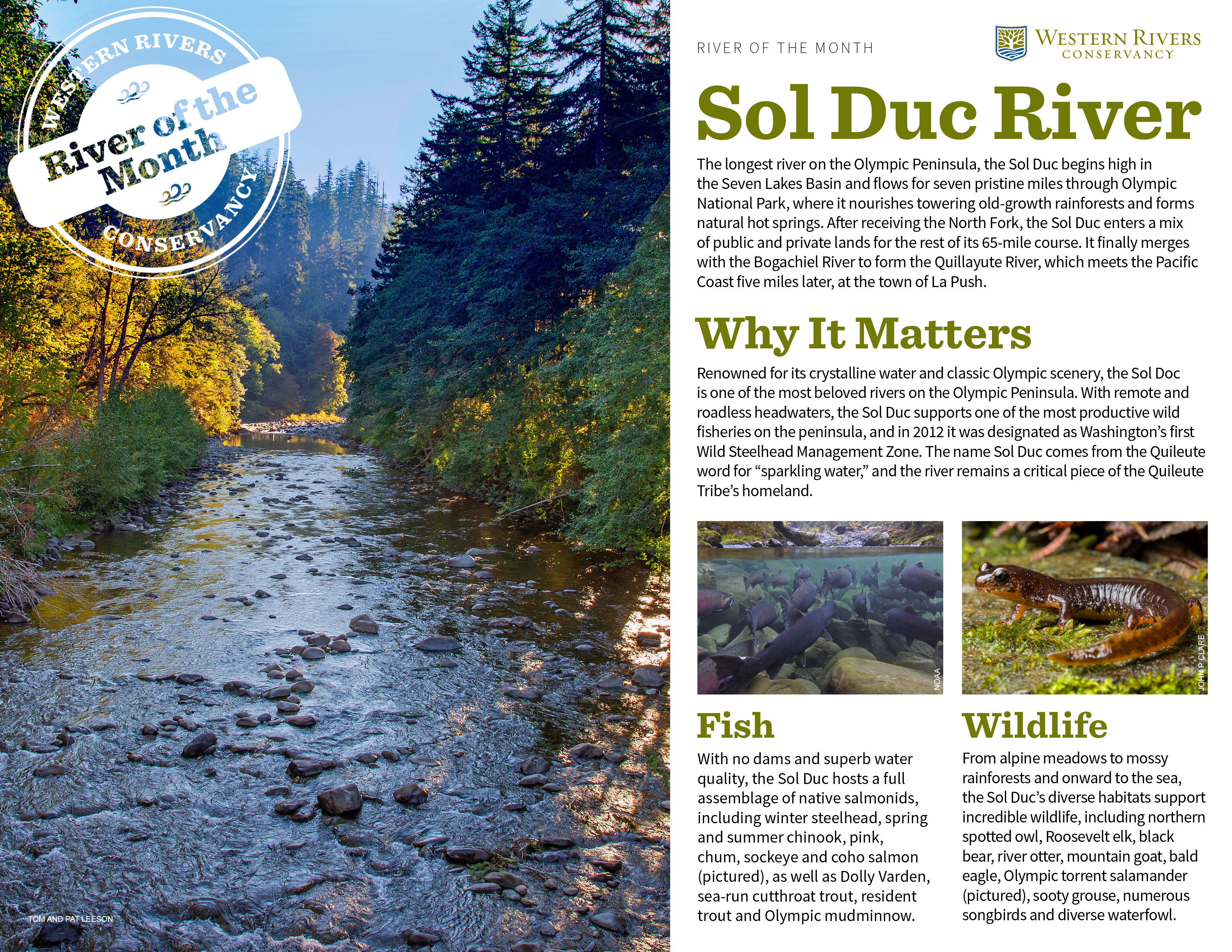
Fish
With no dams and superb water quality, the Sol Duc hosts a full assemblage of native salmonids, including winter steelhead, spring and summer chinook, pink, chum, sockeye and coho salmon (pictured), as well as Dolly Varden, sea-run cutthroat trout, resident trout and Olympic mudminnow.

Wildlife
From alpine meadows to mossy rainforests and onward to the sea, the Sol Duc’s diverse habitats support incredible wildlife, including northern spotted owl, Roosevelt elk, black bear, river otter, mountain goat, bald eagle, Olympic torrent salamander (pictured), sooty grouse, numerous songbirds and diverse waterfowl.
-
Hike
Start from the hot springs resort and head up the Sol Duc Falls Trail, which soon leads you to a roaring, 58-foot waterfall. Cross a bridge and ascend several miles to forested Deer Lake. From here, you can turn back or continue to the High Divide / Seven Lakes Basin trail, a 19-mile backpacking loop with gorgeous views of Mount Olympus and wildlife like deer, black bear and mountain goats.
-
Paddle
For spring and summer fun, the lower Sol Duc is a mellow Class-II float, while the middle river is mostly Class-III with fun surfing waves like “Mosh Pit.” Upstream, experienced kayakers can take on Class IV+ waters in the national park. Finally, don’t miss the chance to encounter otters and bald eagles while you canoe tranquil Beaver Lake, an important wetland area that WRC protected near Sappho.
-
Fish
The Sol Duc is hallowed ground for winter steelhead fishing and is known for its runs of king and coho salmon. Like other Olympic Peninsula rivers, however, the Sol Duc has seen steep declines in numbers of returning fish. It’s also a tough river to fish: The water is technical for boating, and bank access is limited. This is a great river for hiring a local guide.
The WRC Story
To protect a wildlife-rich wetland that feeds the Sol Duc River, WRC purchased two adjacent properties along Beaver Creek between 1997 and 2006. Through funding from the Land and Water Conservation Fund, we placed both tracts, totaling 633 acres, into the hands of the Olympic National Forest. As a result, we conserved all of Beaver Lake and the surrounding marsh, along with a critical reach of Beaver Creek, which winds down to the Sol Duc River. Thanks to this effort, Beaver Creek remains a source of high-quality flows for the Sol Duc, and the lake and surrounding marsh remain critical habitat for a host of wildlife, including threatened species like marbled murrelet and Olympic mud minnow, as well as bald eagles, trumpeter swans, herons, otter and beaver.


Best Time of Year
- Coho fishing
- Aug-Nov
- Steelhead fishing
- Jan-Apr
- Whitewater
- After winter rains
- Hiking
- Mar-Oct
Go Deeper
-
Sol Duc Area Brochure
(Olympic National Park)
Learn More -
Olympic National Park: First Peoples
(Olympic National Park)
Learn More -
High Divide views show river valleys, lift spirits
(Peninsula Daily News)
Learn More


